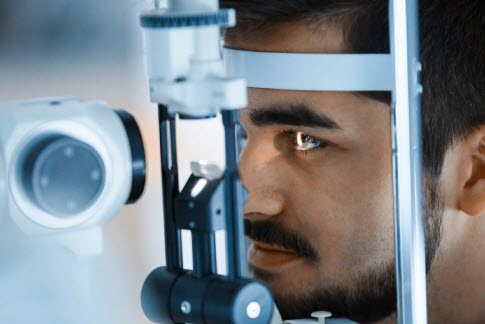When it comes to maintaining clear vision, the health of the cornea plays a pivotal role. For individuals with progressive corneal conditions such as keratoconus or corneal ectasia, an innovative procedure known as Corneal Collagen Crosslinking (CXL) has emerged as a game-changer. This procedure strengthens the cornea, halting the progression of these conditions and preserving visual clarity. In this article, we will delve into the world of Corneal Collagen Crosslinking and its impact on vision health.
Understanding Corneal Collagen Crosslinking (CXL)
The cornea is the clear, dome-shaped front surface of the eye that helps focus light onto the retina. Conditions like keratoconus cause the cornea to become weak and thin, leading to distorted vision. Corneal Collagen Crosslinking is a procedure designed to halt the progression of such conditions by strengthening the collagen fibers within the cornea.
The CXL Process
The Corneal Collagen Crosslinking procedure involves several essential steps:
1. Riboflavin (Vitamin B2) Application
The procedure begins with the application of riboflavin eye drops to the cornea. Riboflavin, also known as vitamin B2, acts as a photosensitizer that enhances the effectiveness of the subsequent ultraviolet (UV) light treatment.
2. Ultraviolet (UV) Light Exposure
After riboflavin application, the cornea is exposed to controlled ultraviolet A (UVA) light. This light activates the riboflavin, leading to a chemical reaction that creates crosslinks (bonds) between collagen fibers. These crosslinks strengthen the corneal structure.
3. Recovery and Healing
Following the UV light exposure, patients are given specific post-operative instructions. These instructions may include using prescribed eye drops and protecting the eyes from bright light. The cornea gradually heals and becomes more resistant to thinning and deformation.

Benefits of Corneal Collagen Crosslinking
Corneal Collagen Crosslinking offers several significant benefits:
• Halting Progression: CXL can halt the progression of conditions like keratoconus, preventing further deterioration of vision.
• Minimally Invasive: The procedure is minimally invasive, involving the application of eye drops and exposure to UV light.
• Preservation of Vision: By strengthening the cornea, CXL helps preserve visual acuity and clarity.
• Potential for Non-Surgical Alternative: CXL can potentially eliminate the need for more invasive surgical interventions such as corneal transplant in some cases.
Eligibility for Corneal Collagen Crosslinking
Individuals with progressive corneal conditions, such as keratoconus or corneal ectasia, are potential candidates for Corneal Collagen Crosslinking. A thorough eye examination and consultation with an eye care specialist are necessary to determine eligibility.
Future of Corneal Collagen Crosslinking
As technology advances, the future of CXL holds the promise of even more refined and personalized treatments. Researchers are exploring techniques to optimize the procedure’s effectiveness and expand its application to other corneal conditions.
Conclusion
Corneal Collagen Crosslinking stands as a beacon of hope for individuals facing progressive corneal conditions. By strengthening the very foundation of vision-the cornea-CXL offers the prospect of preserving visual clarity and maintaining a higher quality of life. As medical science continues to evolve, Corneal Collagen Crosslinking remains a testament to the remarkable strides made in ophthalmology.
Frequently Asked Questions – Corneal Collagen Crosslinking (CXL)
Is Corneal Collagen Crosslinking painful?
The procedure itself is usually painless due to the application of numbing eye drops. There is some discomfort and light sensitivity during the initial recovery period for up to 3 days.
How long does the CXL procedure take?
The actual CXL procedure takes about 30 to 45 minutes. However, patients should expect to spend additional time at the clinic for preparation and post-operative care.
Can both eyes be treated in the same session?
In most cases, one eye is treated at a time to allow for proper healing. The second eye is usually treated a few weeks after the first eye.
Is there a risk of complications with CXL?
Like any medical procedure, Corneal Collagen Crosslinking carries some rare risks. These risks are minimized with proper patient selection and post-operative care.
How long does it take to see the results of CXL?
Improvement in corneal stability is usually noticed within a few months after the procedure. Visual improvement may vary and could take more time. Regular follow-up appointments are crucial to monitor progress.
